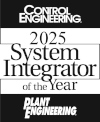The Project: Surpass OSHA and Plant Standard Expectations
Plant operations require not only thorough automation systems to operate at their best; there are rigid operational and safety standards they must adhere to – both industry- and OSHA-based. As guidelines develop and standards are raised, complications arise with machinery and control system platforms that may become obsolete, or at least need updated.
A global battery supplier was facing this exact dilemma when they reached out to E Tech Group to perform risk assessments and implement a mitigation plan to bring their facility up to current standards.
At the start of the project, 79 of the 99 machines had already been assessed and had design bases defining the mitigation scope of work. The remaining 20 machines still required this work to be completed. E Tech Group was responsible for risk assessments for 20 machines, and implementing the safety mitigation work on all 99 machines.
The Challenge: Manage the Unpredictable
There were several challenges associated with the successful completion of this project, ranging from working around unpredictable downtime, to the sale of the brand mid-project. E Tech Group’s engineers remained flexible throughout this multi-year project to accommodate the customer’s needs. The challenges included:
- After E Tech Group automation engineers began the risk assessments, it became apparent that the previously-completed risk assessments were not comprehensive, nor were they accurate. E Tech Group held meetings with the client to create and approve new design documents, which all machines were assessed against.
- Because there were many initiatives occurring within the plant simultaneously, the decision makers were rarely focused on the risk assessment logistics. Flexibility and patience were key in getting customer personnel in place to support the efforts.
- The brand was sold to another corporation during the course of the project, which required some refocusing of priorities and realignment with the new owner’s practices and procedures.
- The biggest challenge was the project schedule, which required working around production needs that fluctuated based on weather events around the world. Getting windows of downtime for installation was hit-or-miss.
E Tech Group utilized our brand of communicative and collaborative project management to ensure, throughout all this unpredictability, nothing slipped through the cracks, as this project was vital to the integrity and compliance of plant operations.
The Solution: Automation Mitigation
After writing and approval of the new design documents, E Tech Group conducted risk assessments on all of the machines. The mitigation plan included:
- New mechanical guarding
- New electrical panels
- New E-stop circuits
After the new automation equipment was installed, the machines were validated against our written protocols. Safety maps, Lock-Out-Tag-Out procedures, “One Point Lessons,” and safety training were completed for the customer. Some of the 99 machines were removed from scope due to changes in priorities and capital decisions to replace machines instead of upgrading, and the rest are safe and compliant to OSHA and plant standards.
The Results: New Relationships, New Projects
During this project, E Tech Group developed a close working relationship with the customer thanks in part to our excellent communication, flexibility and work ethic. Since the completion of this project, E Tech Group has completed multiple additional projects for safety guarding both at the original plant, and in other locations.
E Tech Group is a national automation system integrator creating tailored, cutting-edge control systems that exceed client expectations by increasing the security, consistency and output of a facility’s operations. We serve clients across industries, including control system builds, upgrades and IT support for food and beverage producers, biotech entities, alternative protein startups, and many more.





